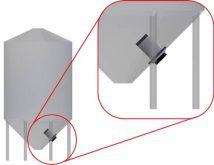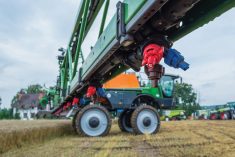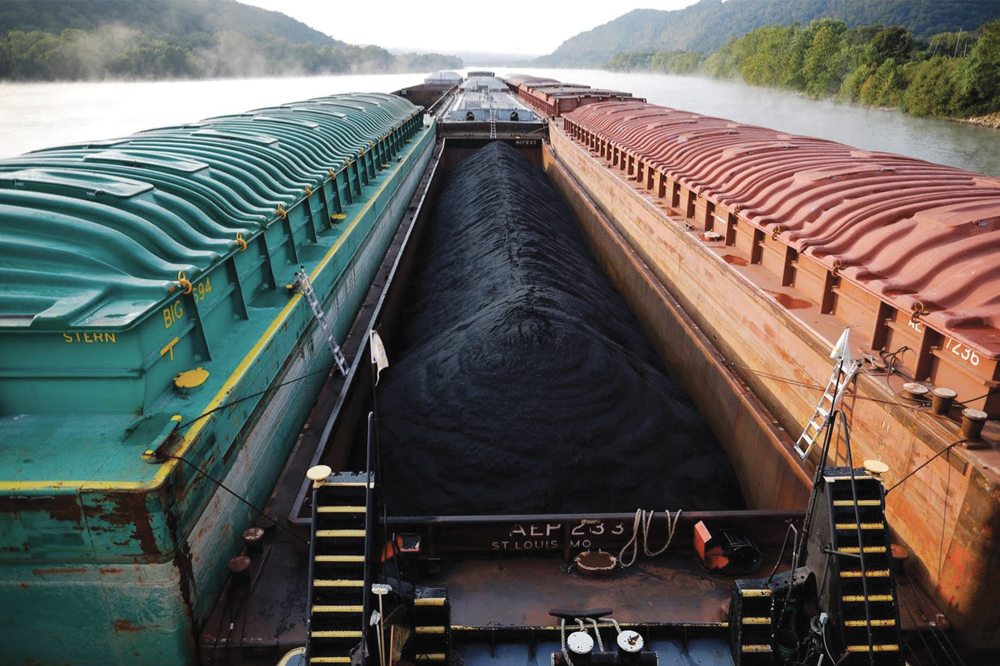As fall progresses, many farmers are starting to consider overwintering their corn until next spring – a purely economical decision that is hard to debate. This article will focus on considerations before harvest, how to deal with high-moisture corn after harvest, and a few key points to ponder if you are considering leaving your corn to overwinter to harvest in 2010.
Much of the information in this article is provided by Ken Hellevang, extension engineer and professor with NDSU Extension Service. More information on grain drying, handling and storage is available at: http://www.ag.ndsu.nodak.edu/abeng/postharvest.htm.
Read Also

Manitoba canola industry has new frontiers
Canola oil is still the main priority for the sector, but canola meal is increasingly the subject of research looking for new markets and uses for the oilseed’s byproduct.
CONSIDERATIONS BEFORE HARVEST
As we move towards November, progression to maturity is very slow. The amount of drying in the field depends on factors such as corn maturity, hybrid, moisture content, air temperature, relative humidity, solar radiation and wind speed. Corn in the field may dry about 0.3 to 0.5 percentage points per day during October and decrease to 0.15 to 0.2 per day or less during November. So for example, if corn was at 35 per cent moisture content Oct. 1, it may dry down to 24 per cent by Nov. 1 and to about 20 per cent by Dec. 1. (Note: immature corn dries more slowly in the field than mature corn.)
Under normal circumstances, field drying is usually more economical until mid-to late October, after which mechanical high-temperature drying is more cost effective.
DEALING WITH HIGH-MOISTURE CORN AFTER HARVEST
Corn at moisture contents at or above 23 per cent should not be stored in a grain bin because the kernels may freeze together, deform and bind together. Corn above this moisture content should be placed so it can be unloaded with equipment that can mechanically dislodge the corn – such as a front-end loader.
It is critical to provide aeration to keep the corn cool or the wet corn will deteriorate rapidly. Condensation and icing occurs on bin vents at temperatures near or below freezing, so leave bin covers open to serve as a safety opening when operating fans near or below freezing temperature.
NATURAL AIR AND LOW-TEMPERATURE CORN DRYING
Corn above 21 per cent moisture should not be dried to safe storage moisture levels using natural air as drying capacity is extremely poor at temperatures below 4C. The same would apply to using low-temperature drying to try and reach safe storage moisture levels as this type of drying (and natural air drying) may lead to corn spoilage.
If corn is below 21 per cent moisture and storage is the plan before high temperature drying, cool the corn to -6 to -4C for winter storage and start drying in early April. Adding heat doesn’t allow for drying of kernels to safe moisture levels but instead reduces the moisture content in storage.
In the spring, if corn is at low enough moisture contents, natural air drying is the most energy-and cost-effective method of drying. Corn depth should be limited to about 20 to 22 feet to obtain the desired airflow rate for drying. Turn fans off during extended rain, fog or snow to minimize the amount of moisture moved into the bin by the fan.
HIGH-TEMPERATURE DRYING
Using the maximum drying temperature – that will not damage the corn – increases the dryer capacity and can reduce energy consumption. The amount of energy required to remove a pound of water is about 20 per cent less using a drying air temperature of 93C than at 66C. Be aware that high drying temperatures may result in a lower final test weight and increased breakage susceptibility. In addition, as the drying time increases with high-moisture corn, it becomes more susceptible to browning.
Housekeeping is critical during drying due to condensation occurring on the dryer creating a wet surface for debris to accumulate. The debris sometimes reduced airflow through the dryer reducing drying capacity and creating a fire hazard.
IN-STORAGE COOLING
Use in-storage cooling instead of in-dryer cooling to boost capacity of high-temperature dryers. Cooling corn slowly in a bin rather than in the high-temperature dryer will also reduce the potential for stress cracks in the kernels.
In-storage cooling requires a positive-pressure, airflow rate of about 0.20 cfm/bu. or 12 cfm/bu.-hr. of fill rate. Cooling should be started immediately when corn is placed in the bin from the dryer. Dryer capacity is increased 20 to 40 per cent and about one percentage point of moisture is removed during corn cooling. Condensation problems can be reduced by cooling the corn in the dryer to about 32C before placing it in storage.
ESTIMATING DRYING COST
To help calculate drying costs, refer to MAFRI’s “Crop Drying Cost Calculator” available at the following link: http://www.gov.mb.ca/agriculture/financial/farm/xls/cropdryingcostcalculator.
xls.
MOISTURE SHRINK
Moisture shrink is the reduction in weight as the grain is dried one percentage point. Moisture Shrink Factor = 100 (100 final moisture content). The shrink factor drying corn to 15.5 per cent is 1.1834. The shrink drying corn from 20.5 to 15.5 would be 5 x 1.1834 = 5.92 per cent.
CORN TEST WEIGHT
Normally, corn test weight increases about 0.25 pound for each point of moisture removal during high-temperature drying. However, the increase in test weight is affected by the amount of mechanical damage during harvest and the gentleness of the drying.
CORN STORAGE
More fines are produced when corn is wet, because more aggressive shelling is required, which causes more kernel cracking and breaking. There is also more potential for stress cracks in kernels during drying, which leads to more breakage potential during handling. In addition, immature corn contains more small and shrivelled kernels. Fines spoil faster than whole kernels, they have high airflow resistance, and they accumulate in high concentrations under the fill hole unless a spreader or distributor is used. Preferably, the corn should be screen cleaned before binning to remove fine material, cob pieces, and broken kernels.
Corn with damage to the seed coat and immature corn has a shorter storage life than mature corn. Therefore, cooling the grain in storage to about -6 to -4C for winter storage is more important than for mature corn. It is recommended to dry the corn a percentage point lower in moisture content. More frequent checking of the storage is also recommended, and immature or damaged corn is not recommended for long-term storage.
POINTS TO CONSIDER ABOUT OVERWINTERING CORN
Field drying is extremely slow during winter months and corn will only dry to about 20 per cent to 21 per cent moisture content based on the equilibrium moisture content for average monthly air temperature and relative humidity. In North Dakota, corn in the field over winter in 2008-09 dried from 25 per cent to 30 per cent moisture in November to 17 per cent to 20 per cent when harvested in February and early March.
If the stalks stay standing and there isn’t much ear drop, snow cover or wildlife damage; the crop can get through the winter without much yield loss. However, notice the number of disclaimers in that sentence. Ear drop will vary by hybrid and environmental conditions as well as the amount of grain on the ear (smaller ears should stay attached better than larger ears). If winter conditions are cool without snow then corn will continue to dry and can be harvested throughout the winter without too much yield loss. Stalks will become brittle and broken corn parts may decrease the grade causing discounts at the elevator. Another point to consider is accumulated snow and cover from the corn resulted in wet fields in the spring, possibly delaying spring seeding.
If you do find yourself in the position of wanting to overwinter your corn, please touch base with your local MASC agent.
The year 2009 has been challenging from the start and for Manitoba grain corn producers it looks like the end of the 2009 growing season may actually end in 2010. This article has covered many points to think about regardless of harvest dates. The final decision will come down to each individual farmer and their own situation.


















